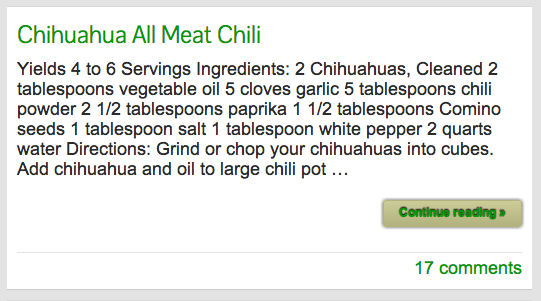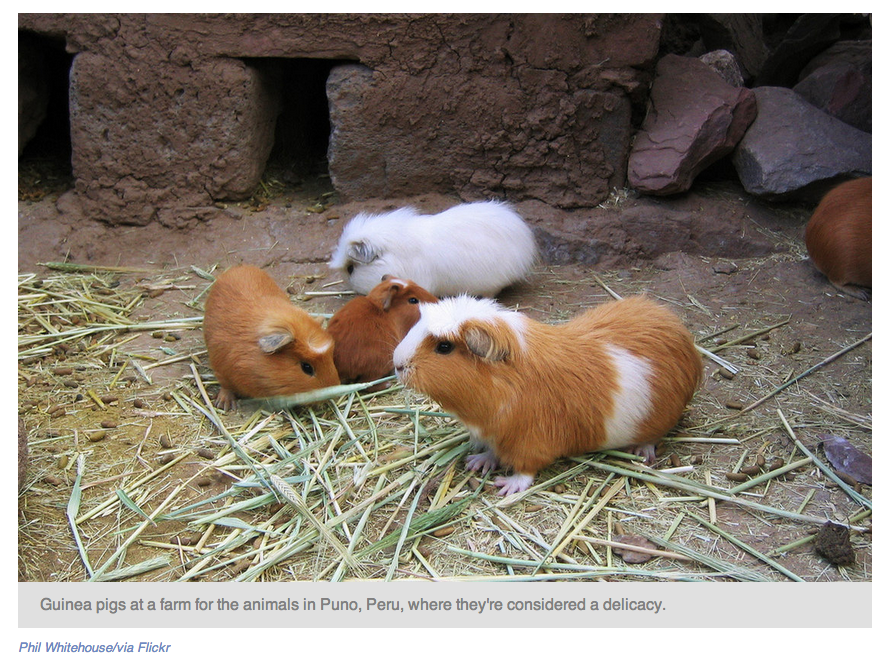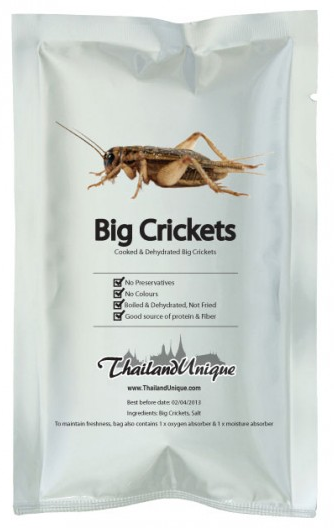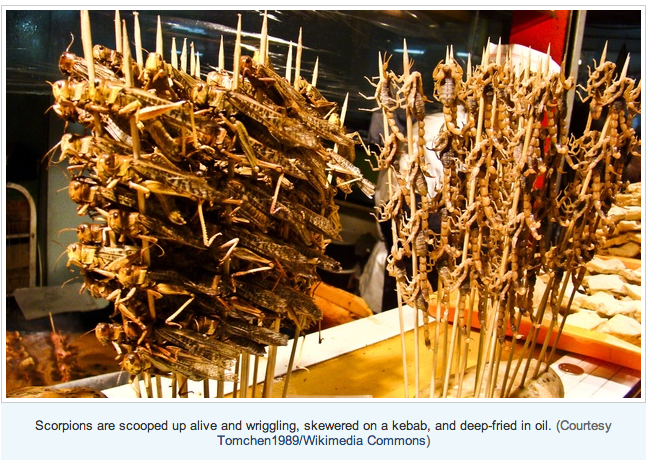Why don’t we eat dogs? That question  will always get student’s attention. The definitions of “appropriate” food are socially constructed and it is often only through norm violations that we see how much stronger the sociological forces are compared to actual biological limitations of the calories available to us. (In a previous post I provided resources for making norm violations for cell phone use clear.)
will always get student’s attention. The definitions of “appropriate” food are socially constructed and it is often only through norm violations that we see how much stronger the sociological forces are compared to actual biological limitations of the calories available to us. (In a previous post I provided resources for making norm violations for cell phone use clear.)
The first tool to help us see the social and cultural forces at work in our food choices is a spoof website called “Pets or Food”. The no defunct site seemed to offer the sale animals that one could purchase as either…you guessed it...pets or food.

Our sense of the “natural” is jolted by reframing what we see as lovable pets into meat that is “just the right size for a pit barbecue.” Cows, chickens, and pigs are food that come in the form of steaks, burgers, strips, ribs, and hot dogs. Beagles on the other hand are pets that we call by name, buy accessories for, and snuggle on the couch with. From a caloric (biological) standpoint, we COULD eat dogs. Culturally, in the US, most find the idea repulsive.

Guinea pigs are one those animals that are given different meanings in different cultural contexts. In the US, they are consider pets. In the Peruvian and Ecuadorian Andes they are important sources of protein. They are small, single-meal-sized (requires no refrigeration like a side of beef), rapidly reproducing animals. While traveling in Peru a number of years ago, I distinctly remember seeing sacks full of live guinea pigs in the market for sale along side fruits and vegetables.
An NPR story explores guinea pig consumption in Peru and their emergence in South American focused restaurants in the US.
You can bring this directly into the classroom with edible bugs – again, a source of protein that is culturally off limits in the US, but biologically possible. I found them at the grocery store once and you can order them online.
Crickets, grubs, and termites are all eaten in other counties, often as delicacies. In western Kenya, the site of much of my research, the first rains of the season bring out swarms of termites from their large earthen mounds that dot the landscape. A flashlight in the dark night attracts the termites. People collect them and sauté then up with a little oil and salt. They taste like popcorn. See this Budget Travel essay for pictures of 13 edible (and eaten) insects from around the world.
Yes, it is biologically required that we eat. What we could eat is much broader than the cultural limits that define what we should eat and what we would even find appetizing. We will only understand this by using our sociological imagination.
An additional resource:
Bon appetit.
Teach well, it matters.




Comments 3
Submit a reflection post by answering the questions listed below. – Myhomeworksolved — June 8, 2022
[…] NORM VIOLATION: PETS OR FOOD? […]
Submit a reflection post by answering the questions listed below. Your entire po – versedwriters — June 8, 2022
[…] NORM VIOLATION: PETS OR FOOD? […]
Submit a reflection post by answering the questions listed below. Your entire po - writerscharter — September 10, 2022
[…] NORM VIOLATION: PETS OR FOOD? […]